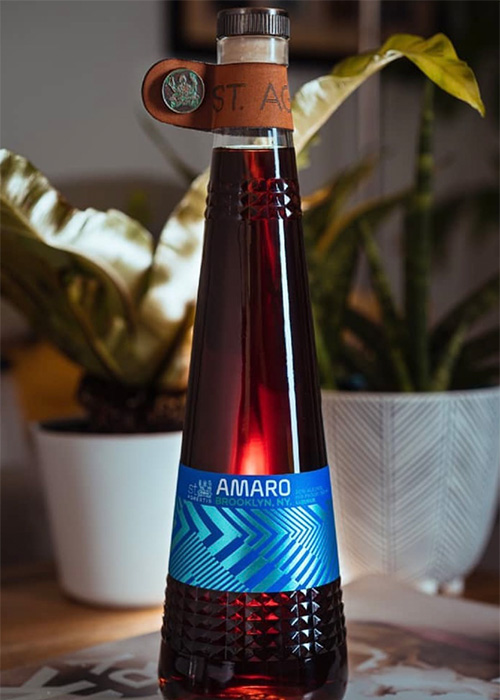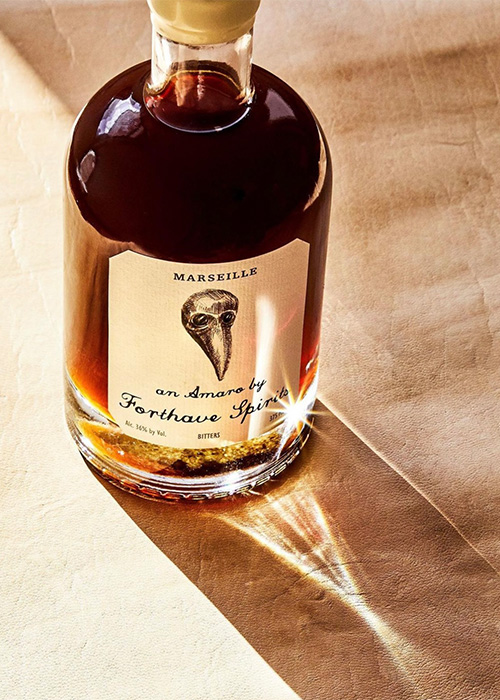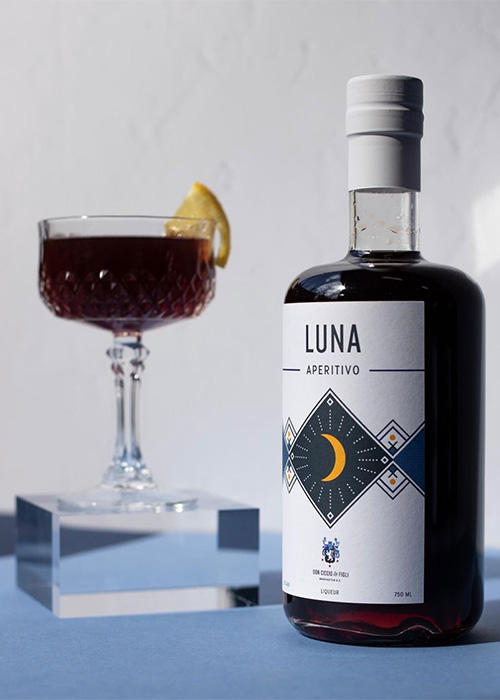If personal history stands correct, I drank my first Negroni in 2007, from Seattle chef Ethan Stowell at his just-opened Italian restaurant Tavolàta. “You’re gonna love this,” he said, sliding the crimson-colored beverage across the bar. Boy, was he right. I was hooked. This was about a year or so before I started working on my first book, “Bitters,” and nearly a decade before the publication of my book “Amaro.”
At that time, Campari and Fernet-Branca were common sights at cocktail bars and restaurants. But more legacy Italian imports like Averna, Cynar, Zucca, and Amaro Nonino Quintessentia were still claiming their own places on the back bar stateside. This initial spark of amaro awareness in the U.S. took place between 2006 and 2009, led by influential bartenders who started to employ these bittersweet liqueurs, previously dismissed as dusty digestivos, in drinks — like the Little Italy (Audrey Saunders, 2005), Black Manhattan (Todd Smith, 2005), Paper Plane (Sam Ross, 2007), and the Bitter Giuseppe (Stephen Cole, 2007) — that are now considered certified modern classics.
As these amaro-kissed cocktails took hold, imports of Italian-born amari increased and still show no signs of slowing down. (Just try to find a cocktail list that doesn’t feature amaro in the mix today.) But when I was researching and writing “Amaro” I kept wrestling with the fact that in the boom of American craft distilling, we weren’t seeing more regionally driven, American-made amaro.
Nearly a decade later, and there are dozens upon dozens of domestic expressions from all over the country now available. Yet even though American amaro has made its stand, it’s still in the shadow of Italian and western European brands that have centuries of generational history and experience with botanical-driven production methods and tradition. But perhaps its biggest hurdle, even now, remains a level of comfort and understanding with the amaro category itself.
Embracing Bitter Flavors
While amaro’s consumer awareness continues to grow in America, one big challenge in adoption remains that bitterness is an instrumental component of how most Italians eat and drink, but a flavor profile that’s less familiar to the American palate.
“Bitter is just about the definition of an acquired taste and trying to introduce the general American population to that idea is hard,” says Melissa Watson, of Bitters & Bottles in South San Francisco, where at least one-third of their 100-plus bottle collection of amari is produced in America. “I think this is shifting now, but at first American producers had an impossible battle to find the right balance — too bitter and you scare a lot of people off, not bitter enough and people wonder if you really belong in the category.”
I witnessed this uphill struggle firsthand when I was on book tour for “Amaro” in Washington, D.C., in November 2016 and shadowed Francesco Amodeo, the Italian-born master distiller who founded Don Ciccio & Figli in 2012, at an in-store tasting of his portfolio of amari and Italian liqueurs. Unlike offering samples of gin or bourbon, where most people have a built-in familiarity and expectations, there was a constant learning curve, especially when the word “bitter” came up.
Even though Amodeo, who comes from a family with four generations’ of knowledge and experience producing liqueurs in Italy, might have an advantage over many new-look amaro makers, building a better understanding of amaro is essential. “We have the legacy of Italian family recipes and an Italian distiller that gives the brand credibility from a heritage standpoint, but we continue to believe a fundamental part of our work is education about this category,” he says.
Amodeo notes that with a limited marketing budget, it’s taken time and persistence growing Don Cicci & Figli slowly and consistently while cultivating a loyal base of supporters. And he’s kept the brand fresh with a recent packaging overhaul that “reflects a more premium look with a nod to our provenance,” as well as launching a range of ready-to-drink cocktails and gift packs and discovery kits utilizing smaller, sample-size bottles.
The Bittersweet Landscape of American Amaro
Even while you can find amaro produced across the United States — from Maine to California and Washington to South Carolina — state-by-state laws, regulations, and complicated national distribution issues can often mean limited, regional availability. While this is how Italian amari first started, before Italy’s unification and eventual mass distribution and export, it can be frustrating for consumers, and even more so for producers hoping to get their local products into a larger market.
In spring 2014, sommeliers Nicholas Finger and Fairlie McCollough started St. Agrestis Amaro in Brooklyn, marking the arrival of New York’s first contemporary amaro. Along with Forthave Spirits, which launched in 2016 and Faccia Brutto Spirits in 2020, St. Agrestis helped establish the borough as a focal point of the American-made amaro movement.
In 2017, brothers Louie and Matt Catizone partnered with Steven DeAngelo, the founder of Greenhook Ginsmiths, and acquired St. Agrestis, eventually expanding the business from producing one signature amaro to including two aperitivo expressions as well as a bottled Negroni and a popular non-alcoholic version called the Phony Negroni. “I think in Brooklyn we’re in such a golden age of amaro that the awareness is way higher than it is in other parts of the country,” says Louie, a first-generation Italian-American. “It’s been a slow transition over the last six years but for a long time, St. Agrestis was known as an amaro company. I think we’re now more synonymous with the word Negroni than the word amaro at this point.”

Catizone considers distribution one of the biggest challenges of the business and St. Agrestis has developed a network of 32 state-by-state independent distributors around the country to get their product onto shelves. But for Catizone, a key to staying relevant is having St. Agrestis at bars and restaurants, especially when included in a drink and listed on a cocktail menu. “When you go to other cities and mention that you’re on the menu at Death & Co. people pay attention and know you’re serious about what you do.”
At Forthave Spirits, owners Aaron Sing Fox and Daniel de la Nuez lean into being both local and producing niche products in a sometimes confusing category. “We’re open about our processes and don’t approach our work with intentions of competing with other producers,” says Fox. He compares the new amaro frontier to the world of craft beer where there are so many small producers making the same style of product that brand-to-brand comparisons and competition are implausible.
Like Italian producers who often produce additional spirits other than amaro (such as anisette or grappa), Forthave also makes gin and génépi, which is less about safeguarding themselves against the potential of waning interest in amaro than different chapters in their continued story. “We got into the world of botanical spirits due to a love of discovery and there is always something to learn,” says de la Nuez. “Our spirits are reflections of our experience, labor, and intent. If you try our Marseille Amaro and enjoy it, hopefully as much as we do, then we’ve done our job.”

After several years of research and development, Patrick Miller, formerly the chef at Rucola, an Italian restaurant in Brooklyn, finally went live with Faccia Brutto Spirits on March 1, 2020. Two weeks later every bar and restaurant across America would be closed and the sense of discovery of shopping in person at delivery and pick-up-only liquor stores was lost. “Building brand awareness during the pandemic and lockdown was seemingly impossible,” recalls Miller. “Every wine shop was doubling down on brands that people knew and weren’t giving a new kid on the block a shot.” Unlike Forthave and St. Agrestis, Miller has to answer to 16 silent investors (made up mostly of family and friends), but now that he’s rebounded and expanded this portfolio to seven different amari and liqueurs, they’re all mostly paid back at this point.
Faccia Brutto mostly follows the model of creating a modern interpretation of a classic amaro style or category, like aperitivo, fernet, alpino, and its latest carciofo release, which has sold 150 cases in two months. “This familiarity can help consumers far more than saying it’s local or American-made, because the sommelier or wine shop clerk can say ‘if you’ve had X, you’ll like this stuff,'” says Miller. “That’s where we really need to thank the legacy brands. They’ve set the bar; we’re all neophytes.”
It doesn’t hurt that Faccia Brutto’s unique bottle design and attractive, colorful labels tend to pop on shelves as well as Instagram, especially when all lined up together. “Instagram was instrumental when I got started,” says Miller. “We’ll put up ads and send bottles out to influential people and when they post a photo it helps get the word out to people in different industries or folks who aren’t in the cocktail and spirits world.”
Craft Vs. Quality
As with other small-batch spirits, just because it’s considered a craft product doesn’t necessarily mean it’s actually good. American amaro can be especially challenging, both to consumers and professional bartenders, as many are trying too hard to be the new Fernet or the new Campari, or their blends are so esoteric that they remain outliers, too unfamiliar to enjoy on their own and unapproachable as cocktail ingredients.
“I just haven’t had a really great American amaro yet, one that seemed thought out, accomplished, and polished,” says Toby Cecchini, co-owner of Brooklyn’s Long Island Bar, who spent a long time with Christian Krogstad of House Spirits in Portland, Ore., working to create his own amaro. “We never finished up the project, and may still, but the thing is, I made dozens, maybe hundreds of different iterations of these assays,” says Cecchini. “Now I taste all of these wildly overpriced and overhyped nouvelle amari and so many of them just strike me as one of my awkward experiments, the kind of thing I would taste and go: nope, and then dump and move on.”
Nima Ansari, the spirits buyer at Astor Wines & Spirits in New York, doesn’t necessarily agree. At Astor, American-made amaro makes up to 20 percent of its extensive amaro selection, and Ansari thinks the “more the merrier” moment serves to inspire and educate consumers rather than confound them. “This may very well be the most exciting category in all of spirits at the moment,” he says. As for inconsistent quality, he finds the same with the Italian amaro field. “There is a difference between inconsistent quality and variation,” says Ansari. “You should consider brands on an individual basis, try to understand what they are working at, and then see if batch to batch, release to release lives up to that — sometimes the definition between the two can be close, other times they are a universe apart.”

As for the price of American amaro, which can hover north of $40 to $50, Ansari focuses on the question of value. “You can be happier spending more money on something if you understand its inherent value and it lives up to your expectations, and in the same way you can be disappointed in something that doesn’t deliver for you even if it was less expensive than the perceived competition.” Bitters & Bottles’ Watson wonders if, in a race to catch up with the Italian amaro scene, American producers are trying to skip ahead. “We should let the little guys be little guys for a while, and be ready to pay a premium if we want to try it now,” she says. “There are going to be examples where the product just isn’t good enough no matter the price, but unfortunately that happens in every category, and actually every industry.”
But the balance between price and quality of many of these “gussied ampoules of boundless joy” remains a sticking point with Cecchini. “I want them to be better, much better, and I want them to be less punitively expensive,” he says. “Until the Americans can establish what they’re trying to do with the category, and compete in both accomplishment and price with the long-established European brands that, by right, control the market, I will remain once-bitten.”
Yesterday, Today, and Amaro
The long game of American amaro makers will vary from producer to producer, but even considering questions of cost, quality, availability, and sustainability, it’s clear that the category and the many ways consumers discover and use amaro will continue to expand in the coming years. I used to envision a natural culling among the bittersweet herd of expressions, but I suspect it will continue to move ahead at the current rate for a while.
“Nothing lasts forever and everything goes in cycles,” says Ansari. “There are likely brands around today that may not be around tomorrow, others that will grow more of a national and global presence, and others that may remain regional. All of this is natural. I think what it comes down to in the end is as a brand is, how do you define success for yourself? Being clear about the answer to that will likely guide the decisions you make in the types of products you produce.”
“I’m very aware that I do this really special thing for a living. I get to ride my Vespa to work and make amaro in the morning and in the afternoon visit some of the most amazing bars and restaurants in the world, right here in New York,” says Catizone. “We make enough money to live our lives and run our business, but I’m looking ahead to what happens after year 10 or year 20.” What that looks like for St. Agrestis or if, as with Italian tradition, we’ll see a second generation someday joining the family business remains to be seen.
This story is a part of VP Pro, our free platform and newsletter for drinks industry professionals, covering wine, beer, liquor, and beyond. Sign up for VP Pro now!
